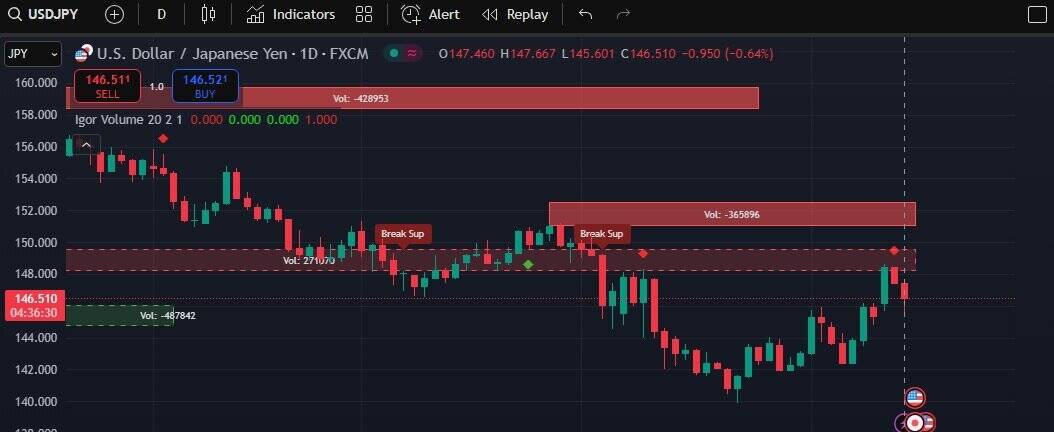Japan’s rising wholesale inflation is putting renewed pressure on the Bank of Japan to tighten its monetary policy. With corporate goods prices increasing by 4.0% year-on-year, it’s clear that domestic inflationary forces are gaining momentum. This makes it more likely that the BOJ will raise interest rates again in the coming months. A higher interest rate outlook typically strengthens the yen, as investors seek better returns in Japanese assets. Meanwhile, if the U.S. dollar faces headwinds from global trade tensions or a slowdown in U.S. inflation, the USDJPY pair could weaken. As a result, we may see the yen appreciate and USDJPY trend lower into the second half of the year.
Below we can see how price retest 2 months resistance:

JPY Summary: Japan’s Wholesale Inflation Hits 4%, Adding Pressure on BOJ
-
April 2025 CGPI (Corporate Goods Price Index) rose 4.0% YoY, in line with forecasts but slightly down from 4.3% in March.
-
The CGPI index hit a record high (126.3) for the 8th straight month, reflecting persistent upstream inflation.
-
Rising raw material and labor costs continue to push companies to raise prices, especially at the start of Japan’s fiscal year.
-
Despite a 7.2% fall in import prices due to a stronger yen, domestic inflation pressures persist, notably:
-
Food & beverages: +3.6% YoY
-
Agricultural goods: +42.2% YoY
-
-
The impact of U.S. tariffs under President Donald has been muted so far due to a 90-day delay, but future risks remain.
-
BOJ Outlook:
-
With core CPI at 3.2% in March, above the 2% target for 3 years, the BOJ remains under pressure to hike rates.
-
Another rate hike could come around September or October, depending on domestic inflation and trade impacts.
-
-
Current Rate: Short-term interest rate is at 0.5%, after ending a decade-long stimulus in January.
Implications for JPY:
-
Stronger domestic inflation and potential rate hikes could support the yen.
-
But concerns over U.S. trade policy and global demand weigh on sentiment, keeping the yen under volatility pressure.























